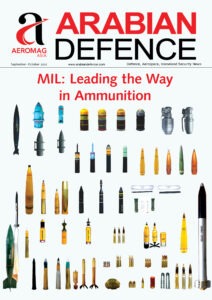
BAE Systems has successfully completed environmental testing for NASA’s Spectro-Photometer for the History of the Universe, Epoch of Reionization, and Ices Explorer (SPHEREx) Observatory. This groundbreaking mission, slated for launch in February 2025, will conduct all-sky spectral surveys for the first time, providing scientists with unprecedented insights into the formation of the universe and the galaxies it contains.
Over the course of its minimum two-year mission, SPHEREx will utilize an advanced imager to survey the entire sky in near-infrared light four times, providing the most high-resolution colour maps of the universe ever created and gathering data on more than 450 million galaxies, along with millions of stars in our solar system. These surveys will help to shed light on fundamental questions about the cosmos, map the 3D distribution of galaxies to study the expansion of the universe since the Big Bang, track the faint glow of ancient galaxies for clues as to how they formed and grew over time, and seek out how life-sustaining ingredients like water play a role in the development of planets.
“SPHEREx will allow us to look back into the early universe and provide new insights into how and why it came to be as it is,” said Alberto Conti, vice president and general manager of BAE Systems Space & Mission Systems. “We’re excited to help uncover these enduring mysteries and to continue our long-standing support of NASA’s astrophysics missions.”
In addition to its primary science missions, SPHEREx will also work to identify targets of interest for more detailed observation by other satellites, such as the James Webb Space Telescope, and help lay a foundation for future missions like the Nancy Grace Roman Space Telescope.
BAE Systems built the satellite bus for the mission, along with the instrument’s telescope and cover. The other instrument elements were developed by the California Institute of Technology (Caltech) and NASA’s Jet Propulsion Laboratory. Caltech’s Dr. Jamie Bock is serving as the principal investigator for the mission.
BAE Systems also led the observatory’s integration and environmental testing program, which includes thermal vacuum chamber tests that simulate temperature and conditions in space, vibration and acoustic tests that mimic launch conditions, and electromagnetic interference and compatibility tests to ensure the spacecraft isn’t vulnerable to electrical disruptions. With testing completed, BAE Systems will now enter final preparations for shipment and launch.
SPHEREx is scheduled to launch no earlier than February 2025.











